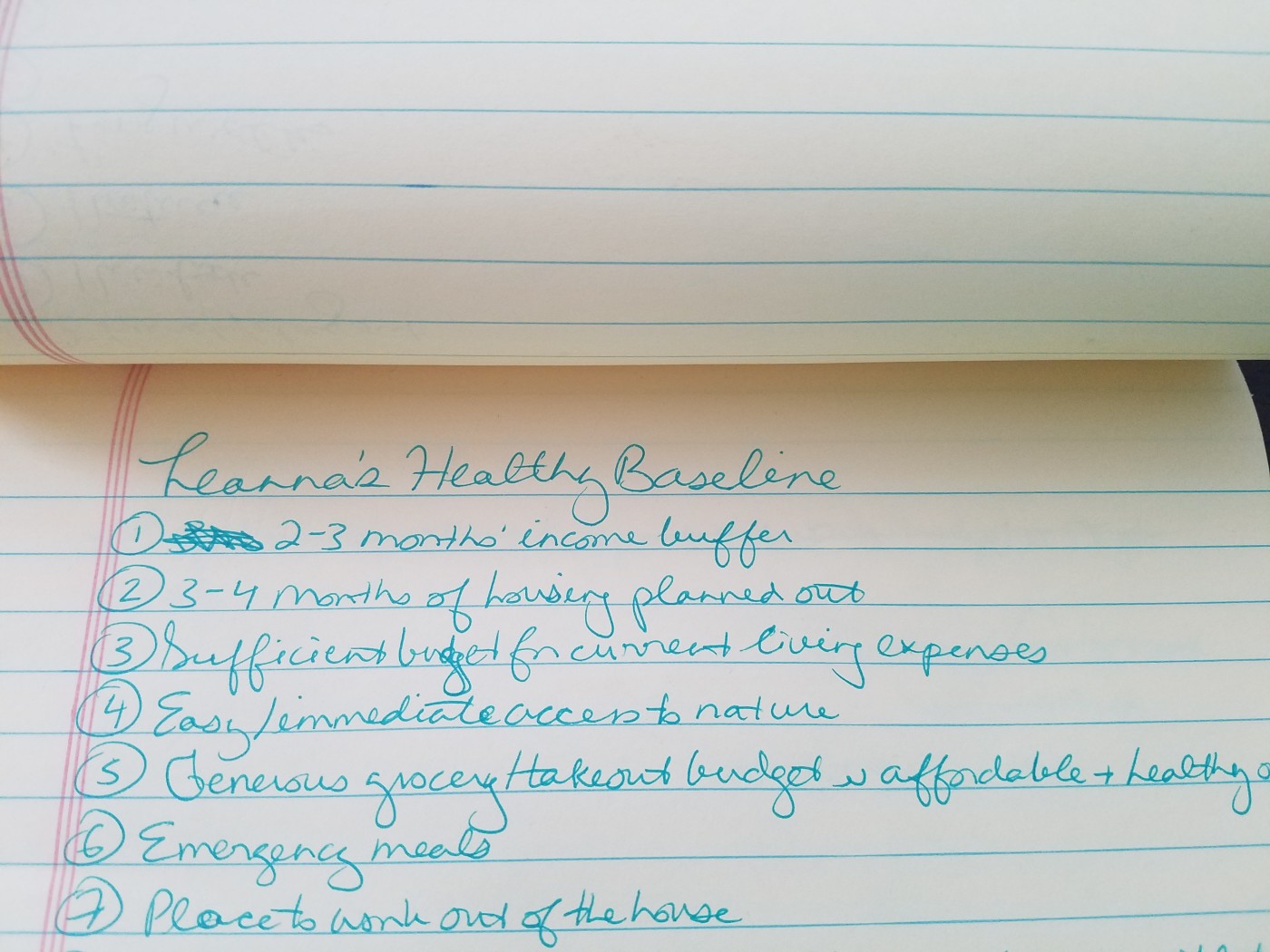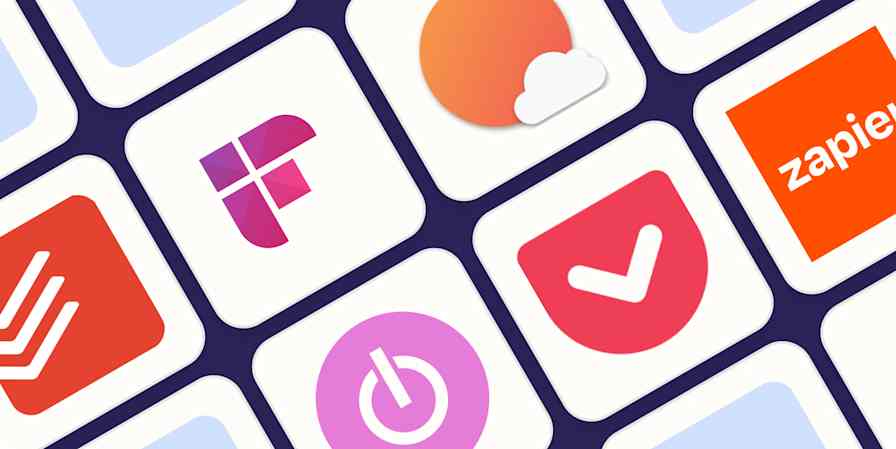I'm still recovering from a rough six months. From October last year through this March, I worked two back-to-back busy seasons while living with unusually bad episodes of depression and anxiety, including a higher-than-usual number of anxiety attacks, dissociative episodes, hypervigilance, and paranoia. I spent a lot of time in survival mode.
I'd been having a record year of good mental health up until then, so I wasn't prepared. These long, drawn-out flare ups left me in a constant state of exhaustion and brain fog, severely limiting my ability to function. It was a serious learning experience—one that I'd love not to repeat.
Now that things have quieted down a bit, I'm taking some time to reflect on what I've learned as a business owner about how to be busy at a bad time.
1. It's ok to lower your expectations
Working through periods of bad mental health and busywork sometimes means reassessing your priorities as a business owner—and that's ok. Because I consistently struggled with time, focus, and energy, I often had to find ways to rework projects or approach them a different way.
Struggling with time
One not-so-fun part of having depression is what I like to call "the depression time warp." I'll often find myself forgetting what day it is or watching the clock run. PTSD can also trigger long "zone out" periods, which ends up reversing my work schedule.
On a good week, I work best in sprints. But the problem I ran into this time was that there were periods I needed to "sprint" to make deadlines when I only had the energy for a marathon. Looming deadlines often caused panic, which then triggered my depression brain to shut down completely. Once that happened, there was no getting anything done, so I had to juggle ongoing projects carefully.
To do that, I used a combination of these three methods.
Short work sprints. This sounds way more formal than it is. Basically, I tried to break my assignments down into twenty-minute bites or until the brain fog kicked back in.
Asking clients for more time. Luckily, one big project ended up having some breather gaps, but I had to negotiate more time for a few others based on schedule and energy.
A 7-day workweek. My "emergency protocol" for bad mental weeks involves working fewer hours for more days each week, so I can space out energy usage a bit better.
Moving forward, I'd also love to practice staying productive while doing less. Zapier writer Krystina has some awesome automation and productivity tips for this.
Struggling with focus
On bad days, complex projects are harder to focus on—but this was on another level. Every assignment felt like climbing a mountain with limited oxygen, and I had to find ways to make my work seem less insurmountable.
Here are a few things that worked for me:
Scheduling chunks. This involves breaking projects down into manageable steps/goals, like outlining an article, completing a specific section, or edits.
Working toward milestones. Instead of planning an entire workflow from start to end, I'd set smaller milestone deadlines one at a time.
Factoring in mood swings. When I felt myself panicking or getting brain-foggy, I'd step away briefly or work on something else.
My biggest project over the winter was 60+ pages of web content, which meant balancing a ton of milestones, deadlines, and stakeholders. By taking the project one page at a time and focusing more on weekly quotas and tasks rather than the project as a whole, I got through without a single breakdown—and very few missed deadlines.
Struggling with energy
Near the end of busy-meets-depression season, my productivity was at an all-time low. Even mustering the energy for projects was hard, and despite my new workflow and industry knowledge, simple tasks took two to three times as long, a great indication that I was nearing the burnout point of no return.
When I reached this point, I had to be even more careful. Here's what I started doing:
Cleaning house. I cleared my calendar, prioritizing projects that were easy for me and took up less brain space.
Prioritizing tasks. I pushed off heavier strategy and admin work until I could focus on it.
Picking projects by rate. Sometimes, I'd only take on higher-priced projects I knew I could take my time with.
Practice self-compassion when you're not operating at your best. Please don't beat yourself up or let pride get in the way of asking for help when you need it. And if you need to talk to your clients about struggling with any of these but aren't sure how to go about it, here's an article I've written that may help.
2. Food matters when you're struggling

My depression diet consists of things that take little time to make but feel comforting, fill me up quickly, and give me an energy boost: milk, pasta, and bread. I'll eat butter noodles with a big glass of milk, tear up bread into a big glass of milk with a little sugar or, yes, just drink the milk.
These foods can be helpful and easy to eat if you struggle with the energy to cook and chew things, but after a week or two, I started noticing a few major issues:
Worse-than-usual energy spikes and slumps
Feelings of bloating and sluggishness
Increasingly bad insomnia
Once I started dealing with much longer periods of sustained depression, that "diet" no longer worked, and in fact, it probably exacerbated a lot of my symptoms. I wasn't able to make a ton of good changes this time, but some of the strategies I tested were useful and should probably become a habit:
Emergency meals. This is what I now call pre-prepared/frozen meals because we mostly use them when one of us is struggling to cook.
Batch cooking. This is one of those "when I'm well" things, but I'd like to find more easy recipes I can cook and freeze in bulk.
Healthier depression food. I'll probably still prefer blander, easy-to-swallow food, but my goal is to make more smoothies and oatmeal, switching out processed carbs and milk for fruit, vegetables, and fiber.
3. Find a spot and stick with it
Picking a space to call your own can help you create a survival routine that allows you to power through whatever you're dealing with in a healthy way.
I'm a digital nomad, which means my "spot" changes every few months. But during this rough time period, I made sure I had the same "depression home office" set up anyway: water, a lap desk (or cushion), plenty of light, cozy blankets, and chargers, pens, and other work stuff within reach.
Just be sure to have some sort of consistency in your work spot.
4. Mental health doesn't always get better
This was hands down the hardest lesson for me to learn—or be reminded of, really.
I'd gotten used to experiencing my mental illnesses in specific ways and bought into the myth that, with the right combination of therapy, medication, and self-care, I too could "get better."
But that's not how this works—at least, not for me. My Bettermental podcast co-host, Mike, and I have talked about how having chronic mental health issues or disabilities gives you a low tolerance for things like stress and burnout. It's a bit like having a sensitive immune system because of allergies.
It's been incredibly hard to accept that I have limited control over my own mental health. In the past few years, I've learned so much about listening to my body and planning a schedule around my good and bad days. And while I can't predict the future, I can be better about anticipating that ebb and flow.
5. Always budget for bad mental health
This brings me to the last lesson: it's time to embrace my mental health, and find ways to function with it. One way I think I can do that is by taking another look at how I budget for mental health.
Depression and PTSD can be expensive. Over that six-month period, I noticed that I tended to spend more money on things like:
Groceries. When I had any appetite for food, it was often for something very specific, like raspberry dark chocolate, which often meant an extra grocery trip or online order.
Takeout. My partner did a fabulous job of taking care of me during my bad periods, but we still ended up ordering out a lot more because we were both exhausted.
Utilities. I adjusted our apartment temperature pretty often because I couldn't regulate my temperature well, had a lot of baths, and drank a lot of tea. It adds up.
Streaming channels or audiobook subscriptions. Because it was so hard to focus, I found myself picking up and dropping a lot of different shows, books, and audiobooks.
I'd also been taking a break from therapy while nomadic because my healthcare budget was limited to basic international insurance. Safe to say that needs to change, too.
Building a mentally-healthy business
The biggest lesson I've taken from this? You can't plan for bad mental health, but you can plan to make things a bit easier for when it does happen.
Living with multiple disabilities as a business owner has its own set of unique challenges, but my goal is to always make sure I have the tools I need to work at my best and support my worst—whatever that looks like.
I'm still recovering and thinking through some of this. But hopefully soon, I'll share how I'm taking action on some of these lessons. In the meantime, I encourage you to think through the last time you struggled with mental health and a busy season at the same time. What have you learned from that experience?
Related reading:










